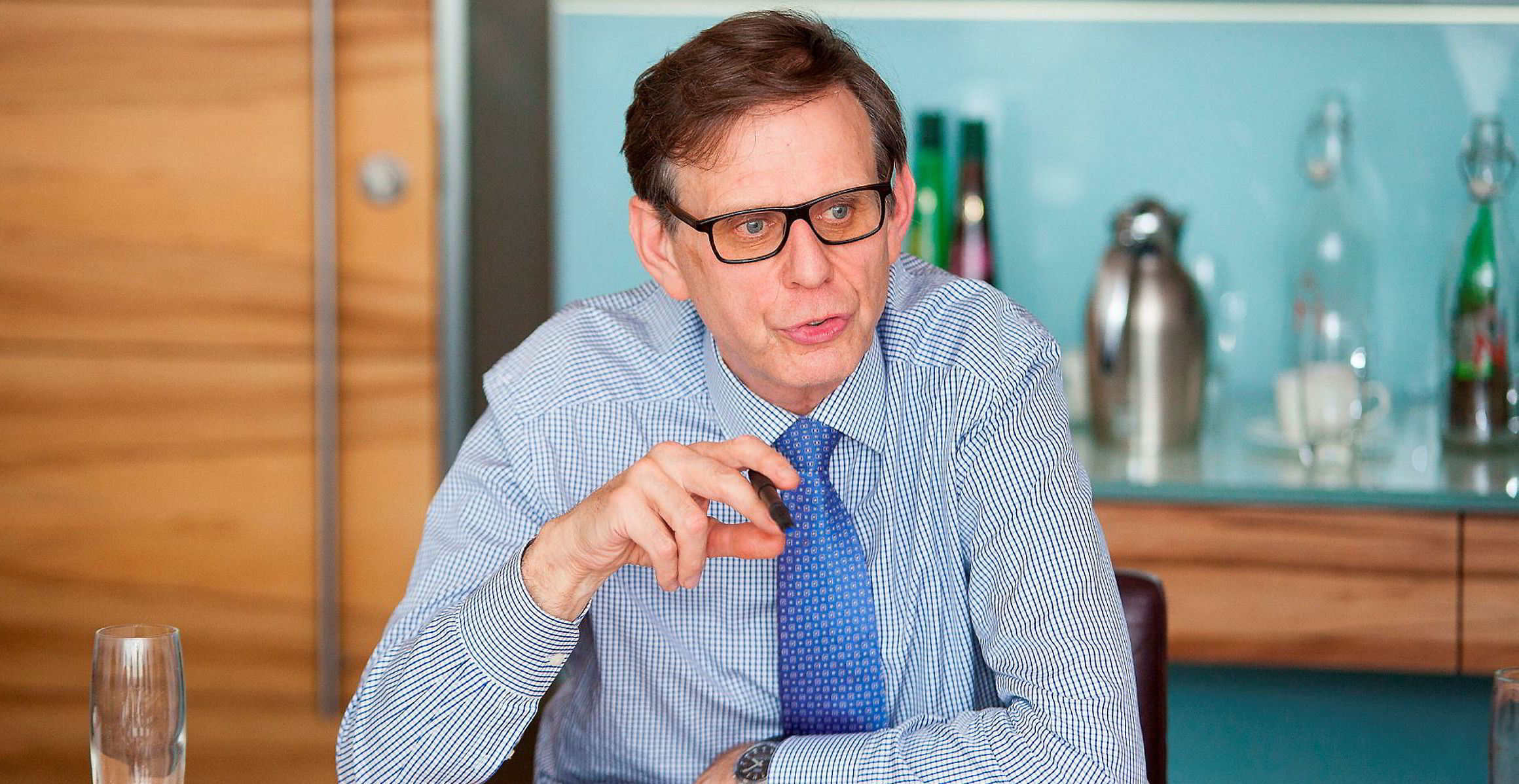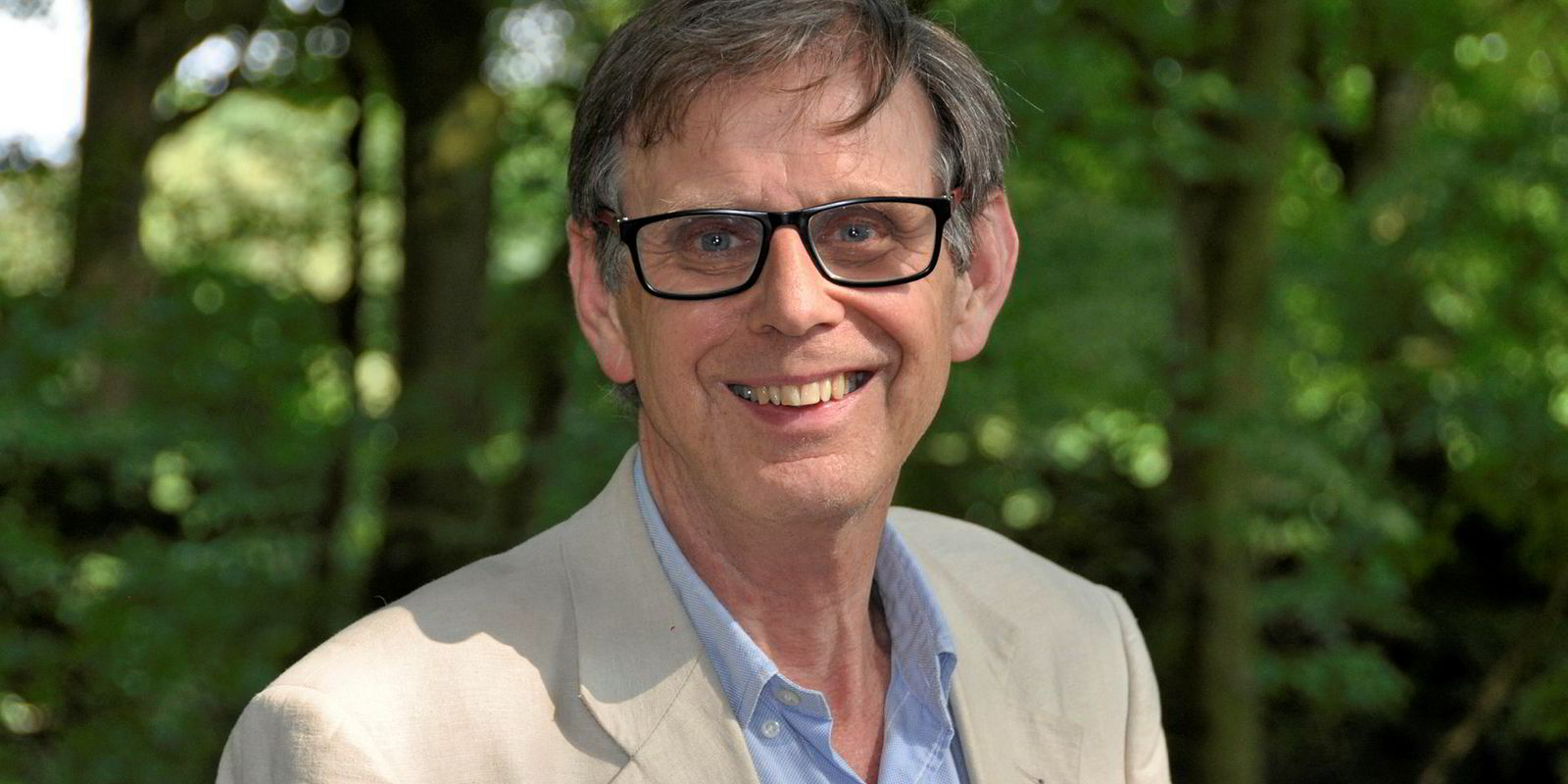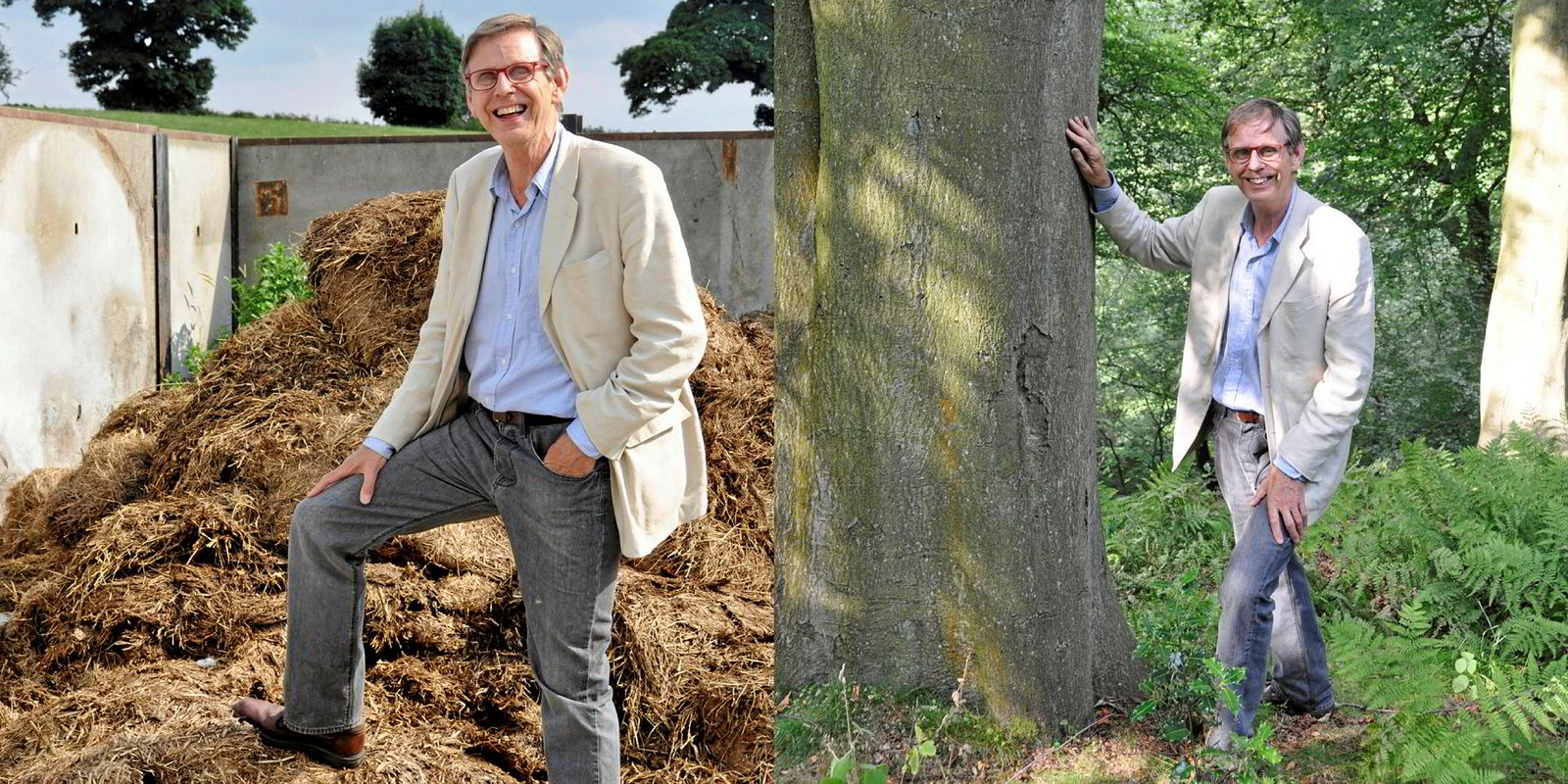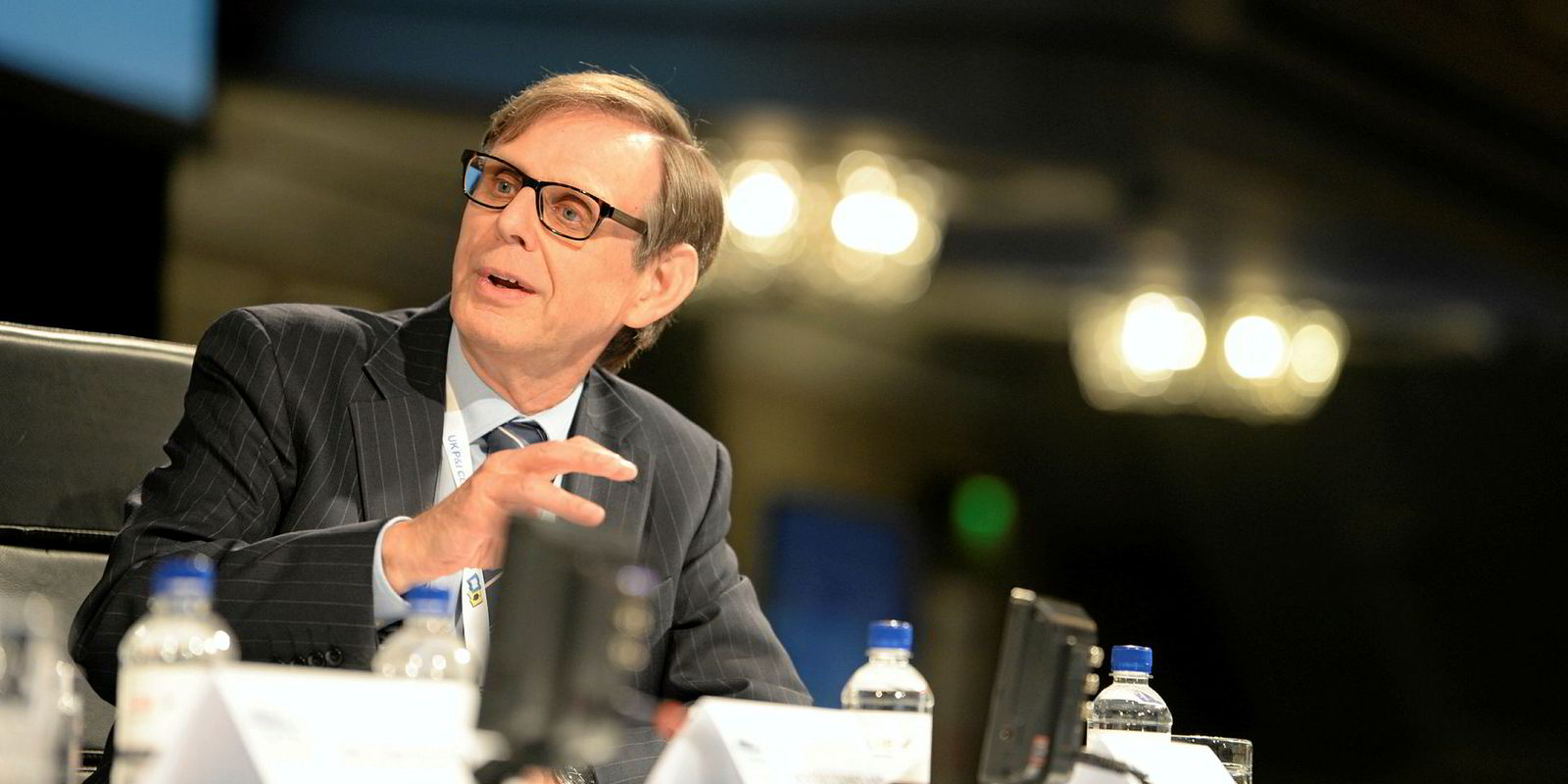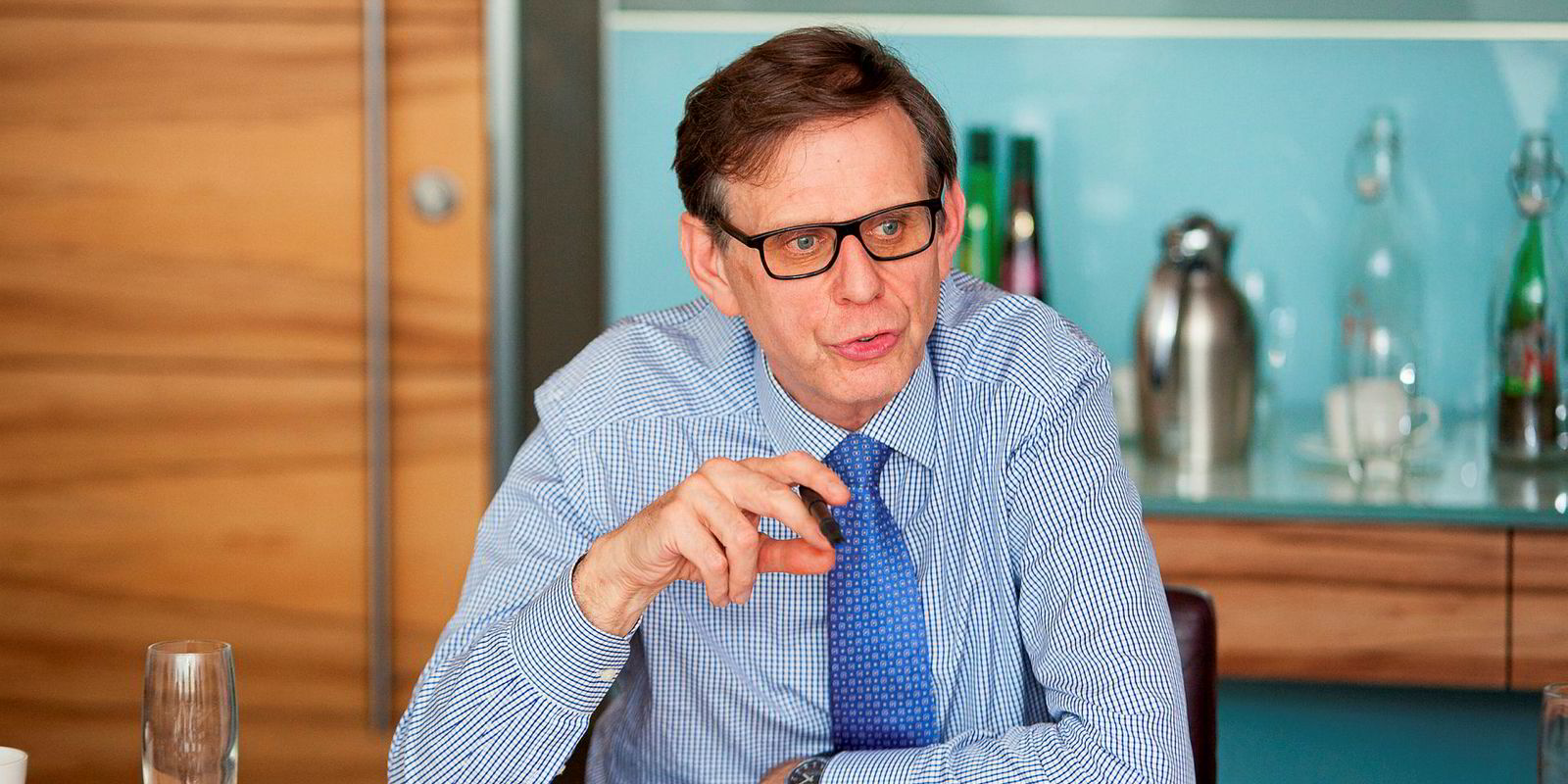Shipyards could see a fresh boom in newbuilding in around 15 years as the world moves towards a low carbon future, economist Martin Stopford predicts.
Demand for new ships powered by batteries or fuel cells, but slow steaming at around 10 knots, could see a resurgence in shipyard output towards the end of the 2020s before peaking around 2032, he believes.
Stopford's long-range forecast emerged from fresh analysis on how to meet ambitious targets to cut shipping's greenhouse gas emissions by 50% by 2050, as agreed by the International Maritime Organisation in April.
“You mustn’t tell the shipbuilders about this scenario, as according to this you’ve got another shipbuilding boom out there bubbling in 2032,” Stopford said.
“You can see the future is bright. The more you do to solve the carbon crisis the better it gets,” the influential analyst joked.
Stopford’s original and ground-breaking analysis was presented at the Women’s International Shipping and Trade Association (WISTA) international annual conference in Tromso, Norway.
'Astonishing target'
It stemmed from a question in his mind of whether it is feasible to cut carbon emissions as far and as fast as the IMO target envisages.
“It struck me as an astonishing target and I couldn’t see how you could do it,” he reflected when it was unveiled. But he is now “quite surprised that I have come up with a view” of how it can in fact be achieved.
IMO is seeking to cut shipping's CO2 emissions from 940m tonnes in 2008 to 470m tonnes in 2050. However, the baseline is only an estimate, and Stopford’s own figures are extrapolations of current data.
You need to rethink the organisation structure for smart management, teamwork and, I have to say, more women.
“This was not produced from actual information, and I used a model to do the numbers,” he added. “We have an enormous information gap.”
Four-point plan
Stopford, president of Clarkson Research Services, believes it would require an overhaul in the nature of shipping business to hit the target with four key requirements:
- Lower trade growth with a new focus on value added shipping
- Widespread slow steaming
- New low carbon power sources
- New operational and personnel structures enabled by digitization
“Number four makes one to three possible by a complete rethink of the industry’s operational and personnel structures," Stopford said.
"In the end the last is a precondition of the others. You can’t do the first three without the fourth.”
Current growth averaging 3.2% per year puts the world on course to move 32bn tonnes of cargo by 2050, impossible to move for limited carbon output unless there is near complete decarbonisation.
However, if the average rate of trade growth falls to 2.2% then seaborne trade would be around 24bn tonnes a year by 2050, double today’s 12bn tonnes, he says.
However, under a ‘business as usual scenario’ for shipping, carbon emissions to transport that volume would still hit about 3bn tonnes a year, over six times the target.
That figure is slashed to around 1.6bn tonnes if the fleet steams at an average 12 knots, which is close to today’s average, and further still if only 10 knots.
“Finally, by bringing in electric power, and then fuel cells from 2025 and gradually building that up you can hit a target of 470m tonnes.
“All of those I believe are achievable targets,” Stopford said with a flourish.
Cargo consequences and transport factories
He added: “One of the things the shipowners won’t like is reducing cargo volumes, but one of the consequences of this is that you are going to need 30% new ships because the ships are going slower.”
Critical to delivering the target would be to rethink the shipping business model.
“The way you might organise this, is that you try to run the shipping company as a transport factory and use information to allow everybody to be goal orientated,” suggested Stopford, who has always taken an intense interest in education and business organisation.
“You need to rethink the organisation structure for smart management, teamwork and, I have to say, more women,” he concluded to cheers from the over 300 conference delegates.
